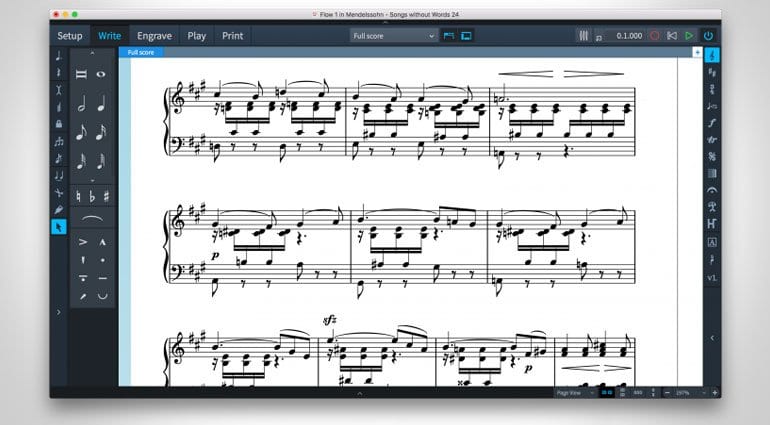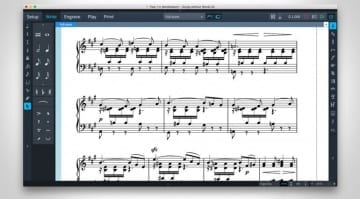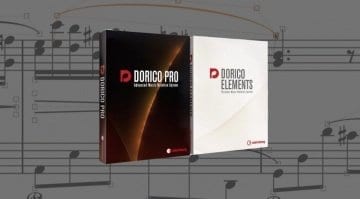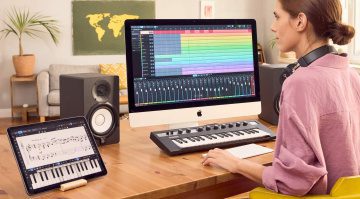Steinberg’s Dorico: Scoring a hit?
Steinberg used to have a score version of Cubase that contained a pretty weighty and comprehensive compositional engine. That version got dropped quite a few years ago but the scoring elements have always remained in the top end or “Pro” version of Cubase. Now Steinberg have decided that it’s worth a product of its own and so are working towards a Q4 release of the new “different” and “gold standard” notation and scoring software: Dorico.
Dorico, as we all know, refers to Valerio Dorico, a music printer from 16th century Rome. Steinberg believe that their score writing software upholds the centuries old craft of fine music engraving. To the untrained eye it’s just a sheet of music but then we’re all heathens and know nothing of such finery. However, if you are looking for precise and detailed score writing then Dorico claims to “fulfill the aesthetic demands of the most discerning engravers and publishers.” The focus definitely appears to be on the accuracy of the score rather than composition.
Steinberg describe Dorico as having five modes or phases: Setup, Write, Engrave, Play and Print. The idea is to create (or even enforce) an intuitive, structured and organised workflow to allow the user to focus on the task at hand rather than being overwhelmed with everything all at once.
Setup: This is where you define or outline your music. You begin by creating “players”, humans that are holding instruments. The players are then containers for individual “instruments”. “Flows” are created which are spans of music such as a song or movement and finally the “Layout” contains the music from one or players and one or more flows.
Write: Note input is done via mouse, computer keyboard or MIDI device. There’s no requirement for a numerical pad and so this will work well on laptops. This is very similar to Sibelius where you can quickly type in music. Dorico will represent your input intelligently and musically in a similar way to a spell or grammar check. You can specify any time signature or none at all and the score will adapt to those changes.
Engrave: This is the part where you tidy up the score in terms of position and clarity on the stave. No music is created in this mode, it’s purely for adjustment so that you don’t accidentally move notes when trying to fiddle with accidental marks and the curve of ties.
Play: Dorico will fully support VST 3 virtual instruments and effects and have a full audio mixer with a channel strip containing EQ, compression, limiting and a reverb. Tracks will be represented in a spookily familiar Cubase kind of way and there even appears to be a piano roll but exactly what impact that has on your perfectly engraved score I’m not sure.
Print: Hit Ctrl + P and you’re off! I’m sure there’ll be lots of interesting and fabulous options in this bit.
There’s a great deal of talk about how this is all completely new and groundbreaking compared to what went before but until you can see it running in the wild it’s really hard to understand how it will stand out from the likes of Sibelius, Finale or StaffPad. Steinberg assembled a special team and have spent 3 years working on and so it really ought to be a decent bit of software. Although I always find the tag line “designed by musicians for musicians” a bit worrying because I’d really like there to be some coders, interface developers and creative designers in there too!
Dorico will be available in the fourth quarter of 2016 for OSX and Windows for EUR 579.
More information is available on the Dorico product page.









